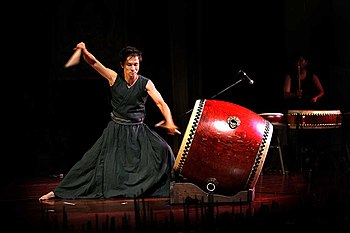Beat (music)

A beat is the basic unit of music . Beats can help measure tempos and are performed in grooves and rhythmic music. They measure the pulse and rhythm of a musical piece. They are usually divided into two kinds: stressed and unstressed beats. Stressed beats are the 'strong' beats and unstressed are the 'weak' beats. Time signatures and tempos are created by moving the beats into particular orders.
On-beat and off-beat[change | change source]
In music that is played in 4|4 time, (counted as "1 2 3 4, 1 2 3 4..."), the first beat of the bar (downbeat) is usually the strongest stressed in the melody and the likeliest place for a chord change. The third is the next strongest: these are the on beats. The second and fourth are weaker: these are the off-beats.
So "off-beat" is a musical term in syncopation that emphasizes the weak even beats of a bar, as opposed to the usual on-beat. This is a basic beat in African polyrhythm that was transferred over into popular western music. According to Grove Music, the "Offbeat is [often] where the downbeat is replaced by a rest or is carried over from the preceding bar".[1] The downbeat (the first beat of a measure in music) can never be the off-beat because it is the strongest beat in 4/4 time.[2] Certain genres tend to emphasize the off-beat; especially rock and roll and Ska music.
References[change | change source]
- ↑ "Beat: Accentuation. (i) Strong and weak beats". Oxford Music Online. Grove Music Online. 2007. Archived from the original on May 16, 2008. Retrieved October 7, 2017.
- ↑ "Off-beat". Oxford Music Online. Grove Music Online. 2007. Archived from the original on May 16, 2008. Retrieved October 7, 2017.
